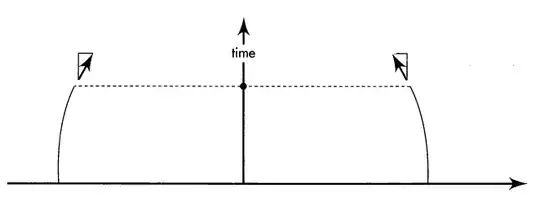
Two particles fall side by side, towards the earth. The horizontal distance between them is 10m. As they advance nearer and nearer to the earth's surface, the horizontal distance decreases, from 10m to say 8m and the particles move closer and closer towards each other.
I understand that happens because spacetime curves inwards and so the particles move towards each other. What I dont understand is how the spacetime curvature effect the particle's velocity. How does spactime curvature induce acceleration?
A non-mathematical answer would be preferred.
